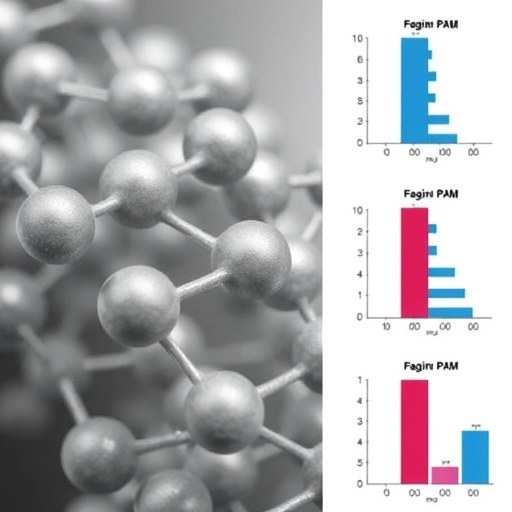In a groundbreaking advancement for the treatment and monitoring of chronic hepatitis B (CHB), recent research has unveiled novel serological proteomic markers capable of tracking liver fibrosis regression in patients undergoing antiviral therapy. The study, led by Zhang et al. and published in Nature Communications, represents a significant stride in precision medicine by offering a non-invasive, dynamic approach to evaluate liver health, a dilemma that has long hampered clinical management of chronic liver diseases.
The global burden of chronic hepatitis B remains immense, with millions affected and facing the risk of progressing to cirrhosis or hepatocellular carcinoma. Central to this progression is liver fibrosis, an excessive scarring response triggered by chronic viral infection and inflammation. Traditionally, liver biopsy has been the gold standard for assessing fibrosis yet its invasiveness, sampling variability, and patient discomfort restrict its widespread use, especially for longitudinal monitoring. Imaging modalities like elastography complement biopsy but can sometimes lack the sensitivity needed to discern subtle changes during therapeutic intervention.
Zhang and colleagues tackled this pressing clinical challenge by harnessing the power of proteomics—the large-scale study of proteins and their functions—in serum samples from treated CHB patients. They deployed advanced mass spectrometry techniques to screen for protein signatures that correlate intimately with fibrosis regression, thereby circumventing the need for direct tissue sampling. This approach captures a wealth of circulating biomarkers reflective of the underlying hepatic environment and fibrotic remodeling.
.adsslot_Lfg7xyWlmu{ width:728px !important; height:90px !important; }
@media (max-width:1199px) { .adsslot_Lfg7xyWlmu{ width:468px !important; height:60px !important; } }
@media (max-width:767px) { .adsslot_Lfg7xyWlmu{ width:320px !important; height:50px !important; } }
ADVERTISEMENT
Their results identified a panel of serological proteins whose abundance fluctuated in tandem with fibrosis stage changes, effectively serving as surrogates for the histological state of the liver. These findings were validated in independent patient cohorts, where the proteomic classifier demonstrated high accuracy in monitoring fibrosis regression during long-term antiviral therapy. This not only facilitates better clinical decision-making but also opens the door for personalized treatment adjustments based on individual patient responses.
The implications extend beyond mere diagnostics. Understanding the proteomic landscape associated with fibrosis regression offers tantalizing mechanistic insights into the molecular pathways underpinning scar resolution in the liver. Several of the proteins implicated participate in extracellular matrix remodeling, immune regulation, and inflammatory signaling, suggesting these processes as central axes that could be targeted therapeutically to accelerate or enhance fibrosis reversal.
Furthermore, this study exemplifies the integration of cutting-edge omics technologies into routine clinical practice, promoting less invasive yet highly informative disease surveillance tools. Such innovations are poised to transform the management paradigms not only for hepatitis B but potentially for other fibrotic liver diseases where monitoring treatment efficacy remains a challenge.
Critically, the research underscores the dynamic nature of liver fibrosis, historically considered a unidirectional process culminating in irreversible damage. The serological proteomic markers provide objective evidence that fibrosis regression is attainable and quantifiable, challenging entrenched clinical nihilism and energizing the pursuit of curative therapies.
While the study focused on patients receiving antiviral therapy for HBV, the methodology and biomarker panels have promising applicability to broader contexts, including non-alcoholic steatohepatitis (NASH) and alcohol-related liver disease. Future expansions could refine these proteomic signatures or integrate them with clinical and imaging data to form comprehensive multimodal predictive algorithms.
The technical rigour involved is remarkable, combining quantitative mass spectrometry with sophisticated bioinformatics to distill meaningful patterns from complex proteomic datasets. The longitudinal design ensured that dynamic changes rather than static snapshots were captured, a critical factor in validating biomarkers as indicators of fibrosis regression rather than mere disease staging.
Moreover, the researchers’ choice of serological samples enhances translational potential; blood-based tests are intrinsically more accessible, cost-effective, and amenable to repeated sampling than invasive biopsies. This could facilitate wider screening and monitoring programs, especially in resource-limited settings where viral hepatitis is endemic but healthcare infrastructure may be constrained.
Zhang et al.’s findings also raise intriguing questions about the temporal kinetics and thresholds of fibrosis regression detectable through proteomics, insights that can calibrate treatment durations and intensities. The identification of key proteins involved in matrix turnover highlights potentially druggable targets, fostering a translational bridge from biomarker discovery to novel antifibrotic therapeutics.
As precision medicine continues to evolve, such studies exemplify the synthesis of high-throughput technology with clinical necessity, shaping a future where liver fibrosis is not invisibly felt or grudgingly presumed but actively governed through measurable molecular insights. This heralds a new epoch in hepatology where patient outcomes can be finely tuned and monitored with unprecedented fidelity.
In conclusion, the serological proteomic characterization pioneered by Zhang and colleagues offers a compelling, non-invasive window into the dynamic remodeling of liver fibrosis amidst viral suppression therapy in chronic hepatitis B patients. The study’s methodological elegance and clinical relevance portend widespread adoption and ongoing innovation across liver disease management. Continued validation and expansion will be essential, but the groundwork has been laid for a radical reimagining of fibrosis monitoring that is as hopeful as it is scientifically robust.
Subject of Research: Monitoring liver fibrosis regression in chronic hepatitis B patients through serological proteomic analysis.
Article Title: Serological proteomic characterization for monitoring liver fibrosis regression in chronic hepatitis B patients on treatment.
Article References:
Zhang, M., Chen, S., Wu, X. et al. Serological proteomic characterization for monitoring liver fibrosis regression in chronic hepatitis B patients on treatment. Nat Commun 16, 7714 (2025). https://doi.org/10.1038/s41467-025-63006-z
Image Credits: AI Generated
Tags: antiviral therapy and liver fibrosischronic hepatitis B treatmentchronic liver disease management strategiesdynamic evaluation of liver healthhepatocellular carcinoma risk factorsliver biopsy alternatives for fibrosis assessmentliver fibrosis regression markersmass spectrometry in proteomics researchnon-invasive liver health monitoringprecision medicine in chronic liver diseasesprotein signatures in serum analysisserological proteomics in liver disease




